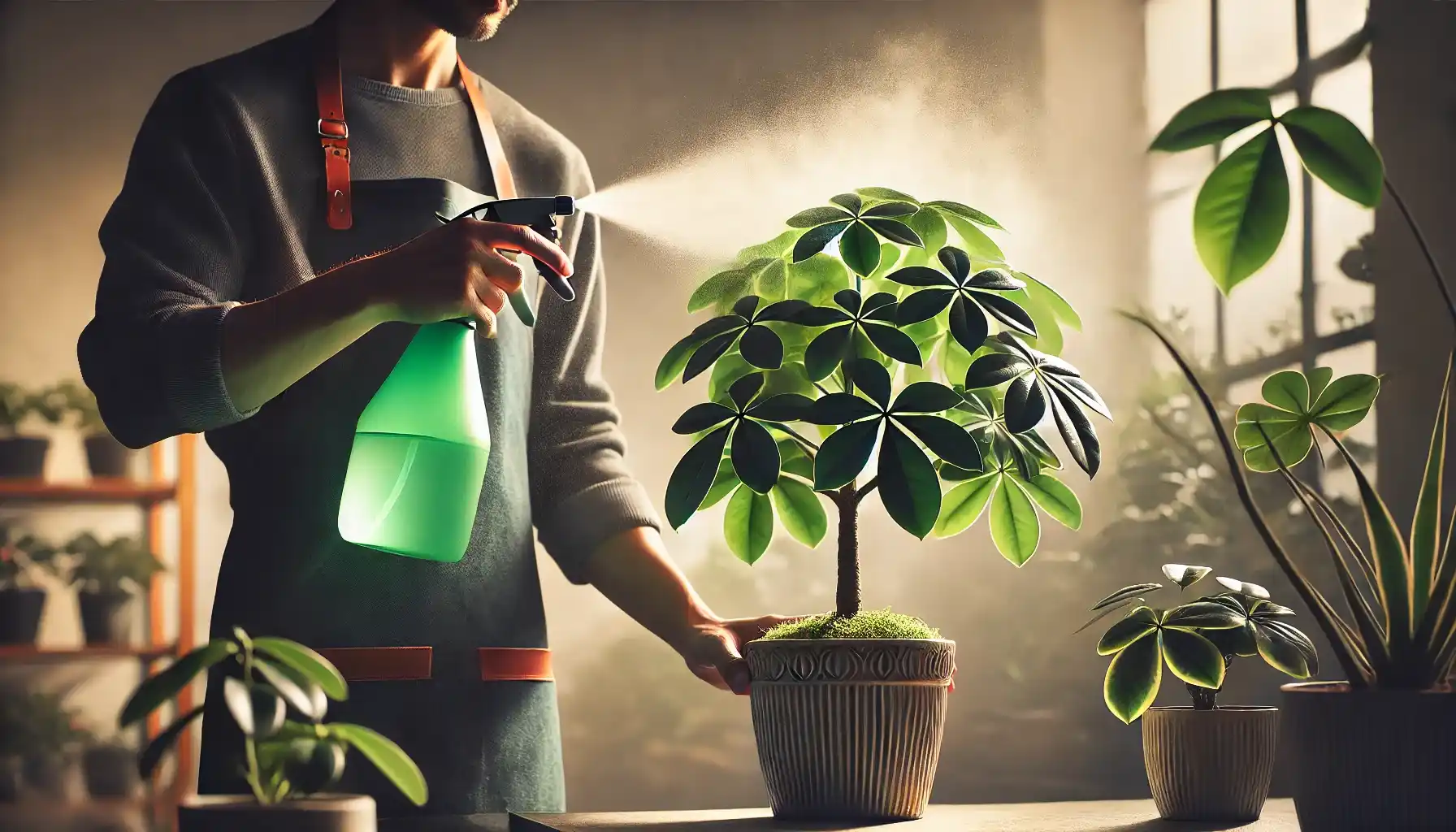
Discover the secrets to thriving money tree plants. Learn about ideal watering schedules, light, humidity, temperature needs, and soil requirements. Troubleshoot common issues to ensure your Pachira aquatica stays healthy.
Contents:
As the saying goes, “Money does not grow on trees”. Nevertheless, there exist plants that are said to draw prosperity and fortune and boost the aesthetic appeal of a place at the same time. Money tree, a unique and meaningful inhabitant of indoor gardens, attracts plant lovers thanks to several factors which include unusual tree structure and relatively easy care requirements as well.
Popular options mean popular solutions, most people believe. However, money trees’ needs are different from the ones gardeners might have gotten used to. How often do I water a money tree? What volume of light is sufficient? So, let us find out and create a healthy natural spot together.

Peculiarities of Money Tree Plants
The money trees, also known as Pachira aquatica, are unique natural creations that were successfully adopted by humans and taken into indoor environments in a bit modified form. When one imagines a money tree, they may picture a 3- to 8-foot tall plant with a braided trunk and 5 to 7 palmate leaves on each stem. This is, however, a domesticated version of a tree, which does not appear with such an ornamental trunk in its natural habitats, i.e., the swamps of Central and South America.
One of the most prominent features of a money tree is its braided trunk. According to the principles of Feng shui, trunks of braided structure may help one catch luck, boost positive energy promoted by a plant, and bring more fortune to people around it. Although it might not be scientifically proven, money trees presuppose amazing improvements, such as interior decoration, air purification, stress relief, and the like.
How Much Water Do Money Trees Need?
Although some botanists assert that money trees are easy-to-grow plants, proper watering is an essential part that should not be neglected. How often does a money tree need to be watered? In general, these trees require watering once every 1 or 2 weeks, though it still depends on different external factors, such as light exposure, humidity level, and temperature, too.
One may wonder when to water a money tree. The greatest way to understand that a plant needs more hydration is to check the surface of the soil. As soon as the top 2-4 inches of the soil dry, it is time to water it again. Make sure that the roots receive adequate moisture by thoroughly watering the tree until you see water draining out from the drainage holes at the bottom of the pot.
Humidity and Temperature Levels
Since money trees are naturally humid-loving plants, the environment in which they grow should be similar to that of their habitat. So as to ensure the tree grows and develops successfully, maintain humidity levels between 50% and 60% by misting leaves and incorporating humidifiers.
As for the temperature regime, the most appropriate range that reproduces the natural environment for money trees is between 65°F and 75°F (18°C to 24°C). One of the key aspects that should promote the health of a plant is consistency, which means there should be no humidity and temperature fluctuations for better results.
Light Exposure
Light is a crucial factor that supplies any plant with energy. In essence, money trees thrive in bright, indirect sunlight. The ideal spot for the tree indoors is an east-facing window with the gentle morning light. Nevertheless, those who cannot find an appropriate location may utilize sunlight filters, such as sheer curtains, or LED glow lights in the reverse situations.
Soil Requirements
As typical for most indoor plants, money trees need well-drained soil rich in essential nutrients. A suitable potting mix should consist of potting soil, sand, and perlite/pebbles. Hence, the soil is to retain as much water as necessary but not get waterlogged.
One more thing to mention is the pH level of the soil. As a rule, money trees prefer neutral to slightly acidic soil of 6.0 to 7.5 pH levels. So as to ensure your plant lives in appropriate conditions, test the soil with the use of a pH meter or pH test kit and proceed with adjusting pH levels further.

Troubleshooting Common Plant Issues
Money trees, as well as all other plants, may get sick. Among the most widespread issues to address are yellowing leaves, leaf drops, brown leaf tips, and root rot. Let us see how to cope with these problems and let your gardens thrive again.
Yellowing Leaves: The most common problem occurring with money trees usually comes from overwatering, underwatering, or nutrient deficiency. And if the first two reasons are simple to address, the latter suggests a deficiency of nitrogen, which can be fixed by applying well-balanced, water-soluble fertilizers into the soil throughout the growing period.
Leaf Drop: Money trees are usually sensitive to any changes in their environment or watering routine. Hence, it is important to keep the plant in a consistent state and alleviate any fluctuations. Another cause of leaf drop could be pest infestation. To combat this issue, inspect your plants regularly and utilize suitable pesticides, whether organic or chemical.
Brown Leaf Tips: Brown leaf tips always serve as extreme signs of low humidity levels or low-quality water. Moreover, it may also be a sign of severe fertilizer burn. To remove excess salts, employ deep watering methods and follow the tips provided via the product’s instructions.
Root Rot: When the soil stores more water than the plant needs, it may get the roots waterlogged and inevitably lead to root rot. How do you identify root rot? The most distinctive features of this condition are a foul smell from the soil and mush stems and roots. The only way to treat a money tree is to trim away the diseased roots and repot your plant afterward.
By the Way… Reminder Check
Most people who wish to have an indoor garden may not be sure about their gardening capabilities. How lucky we are to have a whole industry of plant assistants who are always here to support anyone obsessed with flora of all types! One of the most prominent representatives of the sphere is AI Plant Finder, a handy tool for plant identification and garden management.
AI Plant Finder incorporates various necessary services that may help one when immediate assistance is needed. Want to identify a disease your plants are suffering from? Take a photo of a plant and let the app’s system analyze it. Struggle to explore local flora? Use the app and discover details about every plant in your region. Everything you need in the garden is accumulated in one app.
One of the most useful features of AI Plant Finder is Plant Care Reminders that may be set for each plant in your garden. Keep track of the garden inhabitants right in the “My Garden” section to control their development and manage their well-being. Moreover, so as not to forget about necessary plant care procedures, set up notifications for watering, misting, fertilizing, and rotating. No more missing sessions but happy garden only.

Lucky plants are lucky only when they are healthy. The money tree is a magnificent plant that may enhance any interior and improve indoor conditions, too. But how can you ensure these plants are healthy enough to thrive? Thoroughly explore your plant, meet its needs properly, and start your gardening experience with love and pleasure.